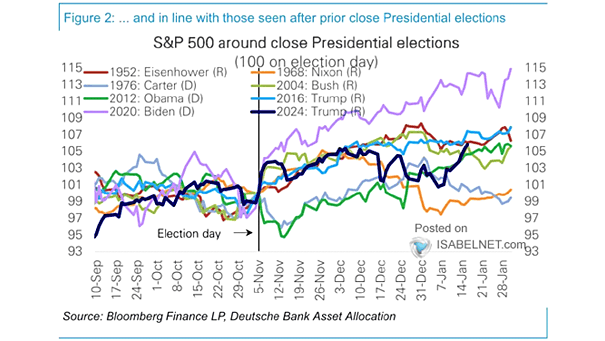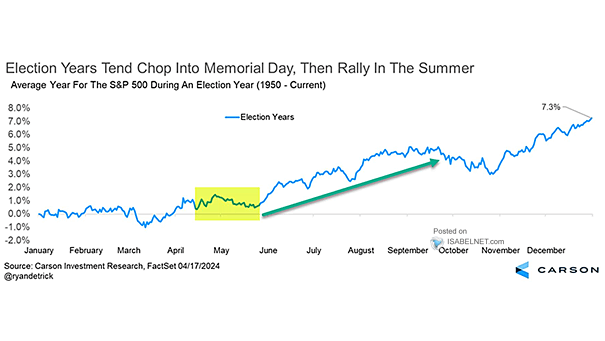S&P 500 Around Close Presidential Elections
S&P 500 Around Close Presidential Elections The cyclical behavior of equity markets around U.S. elections reflects a pattern where pre-election pullbacks are common, followed by post-election rallies as policy uncertainties dissipate. Image: Deutsche Bank Asset Allocation


